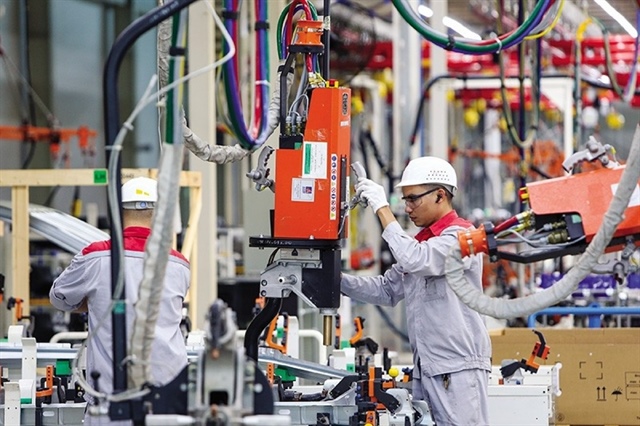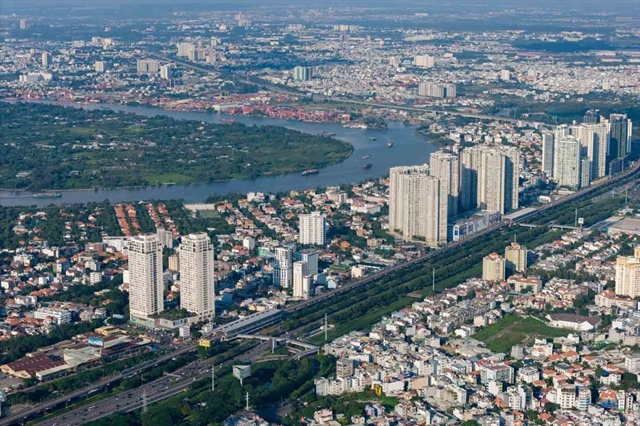SE VN needs better links: forum
SE VN needs better links: forum
The south-eastern region has grown rapidly and enjoys a number of advantages, but also faces many hurdles, especially to inter-provincial connectivity, a forum heard in HCM City on Tuesday.

To overcome this handicap, breakthrough development mechanisms with more efficacious and concerted regional development policies are required, Vu Tien Loc, chairman of the Viet Nam Chamber of Commerce and Industry (VCCI) told the forum titled “Economic restructuring and growth model transformation based on inter-provincial linkage”.
The region has more economic advantages than others, he said.
“The south-eastern region has HCM City, the nation’s biggest economic hub with many multinational corporations doing business.”
It contributes 40 per cent of the country’s GDP and nearly 60 per cent of the Government’s revenues, its average income and economic growth are 2.5 times and 1.4-1.6 times the national average, he said.
Cao Duc Phat, deputy head of the Central Economic Commission, said: “In the last few years, the south-eastern region has achieved sustainable development and rapid growth in many sectors like electronics, software, logistics, finance, telecom and tourism.
“The region has also developed some key industries such as oil extraction and processing, steel, power, IT, chemicals, fertilisers and construction materials, which are very important for national and regional industrialization.”
Tran Dinh Thien, head of the Viet Nam Economics Institute, said: “Generally, economic growth in the region is higher than in other parts of the country, and it is the biggest industrial hub with a lot of industrial parks in HCM City, Binh Duong, Dong Nai and Ba Ria – Vung Tau.”
It has good port and logistics systems and infrastructure, many scientific research and training centres, and skilled and plentiful human resources, he said.
“These factors have created an attractive investment environment.”
Limitations
Loc said however that connectivity is still very weak in the region.
“Each locality develops its own strengths and lacks effective connectivity for development strategies and master plans for infrastructure and human resources.
“Importantly, enterprise communities lack connectivity.”
Thien said while admittedly the region has achieved a higher level of development than other parts of the country, it has not fulfilled its potential.
“There is no regional development strategy or policy. The lack of connectivity is one of the biggest challenges for regional development.
“There is not yet concern about regional development because now regional economic growth is mostly based on key localities like HCM City, but there are no policies to promote the role of key localities in the general development of the whole region.”
Phat said: “The south-eastern region has not successfully switched to the new economic growth model with high value-addition and modern governance using technology and knowledge playing the key role in decision making.
“Furthermore, infrastructure has not caught up with socio-economic development. Roads, waterways and ports are not well linked and there is no high-speed road or rail.”
There are isolated and poorly connected urban areas, many industrial parks have the same functions, and HCM City and provinces compete with each other for investment, and these mean the region’s development is far below its potential, he said.
Effective regional mechanism
“Policies to improve regional connectivity should be issued to create a united regional economy based on collaborative master planning, infrastructure development and investment policies and connectivity between industrial parks and services,” Phat said.
“A region-wide administrative service should be set up gradually.”
He suggested that HCM City should be appointed chairman of the region and the prime minister should be the head of the regional steering committee.
“The region should have [joint] policies for investment, infrastructure, economic zones and industrial parks, and set up regional investment funds and promotion campaigns.”
The role of the private sector in developing infrastructure should be strengthened.
HCM City and provinces should have a breakthrough mechanism to usher in modern corporate management and attract foreign and private investment in infrastructure, especially roads, industrial parks and services.
Thien said: “The government should have new master development plans for the region with a different vision with the roles of HCM City, the Southern Economic Key Zone and the south-eastern region clarified.”
He also said the concept of region-wide development should be highlighted and every provincial strategy and master plan subordinated to regional strategy and plan.
With its high urban density and population, the region should focus on developing a chain of urban areas, achieving breakthroughs in urban administration and increasing the role of the private sector in providing public services, he added.






















